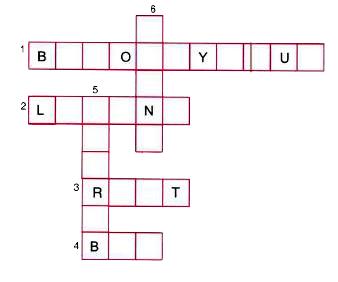Pick up the leaf modification
Cladode
Phyllode
Corm
Phylloclade
The correct Answer is:B
To solve the question "Pick up the leaf modification" from the given options, we will analyze each option step by step:
Step 1: Analyze the Options
We have four options to consider:
1. Cladode
2. Phyllode
3. Com
4. Phylloclad
Step 2: Identify Cladode
- Cladode: This is a modification of the stem. It is a stem that has taken on the function of photosynthesis. Therefore, it is not a leaf modification.
Step 3: Identify Phyllode
- Phyllode: This is a modification of the leaf petiole (the stalk that attaches the leaf blade to the stem). In phyllodes, the leaf blade is reduced or absent, and the petiole becomes flattened and performs the function of photosynthesis. This is indeed a leaf modification and also serves as a xerophytic adaptation.
Step 4: Identify Com
- Com: This is a modified stem that serves as a storage organ for food. Since it is a stem modification, it does not qualify as a leaf modification.
Step 5: Identify Phylloclad
- Phylloclad: Similar to cladodes, phylloclads are also stem modifications that perform photosynthesis. They resemble leaves but are actually modified stems.
Conclusion
After analyzing all the options, we find that:
- Cladode: Stem modification
- Phyllode: Leaf modification (Correct answer)
- Com: Stem modification
- Phylloclad: Stem modification
Thus, the correct answer to the question "Pick up the leaf modification" is Phyllode.
---
We have four options to consider:
1. Cladode
2. Phyllode
3. Com
4. Phylloclad
- Cladode: This is a modification of the stem. It is a stem that has taken on the function of photosynthesis. Therefore, it is not a leaf modification.
- Phyllode: This is a modification of the leaf petiole (the stalk that attaches the leaf blade to the stem). In phyllodes, the leaf blade is reduced or absent, and the petiole becomes flattened and performs the function of photosynthesis. This is indeed a leaf modification and also serves as a xerophytic adaptation.
- Com: This is a modified stem that serves as a storage organ for food. Since it is a stem modification, it does not qualify as a leaf modification.
- Phylloclad: Similar to cladodes, phylloclads are also stem modifications that perform photosynthesis. They resemble leaves but are actually modified stems.
After analyzing all the options, we find that:
- Cladode: Stem modification
- Phyllode: Leaf modification (Correct answer)
- Com: Stem modification
- Phylloclad: Stem modification
Topper's Solved these Questions
- LEAFBOOK - DINESH PUBLICATION ENGLISHCHAPTER - LEAFEXERCISE - CYG
10 Videos
- KINGDOM PROTISTA (UNICELLULAR EUKARYOTES)BOOK - DINESH PUBLICATION ENGLISHCHAPTER - KINGDOM PROTISTA (UNICELLULAR EUKARYOTES)EXERCISE - CHECK YOUR GRASP
19 Videos
- LOCOMOTION AND MOVEMENTBOOK - DINESH PUBLICATION ENGLISHCHAPTER - LOCOMOTION AND MOVEMENTEXERCISE - CHECK YOUR GRASP
10 Videos
Similar Questions
Knowledge Check
Corm is the modification of
ARootBLeafCStemDBud
Write about any two leaf modifications which perform special functions.
View SolutionAustralian Acacia, Turmeric, Zaminkand, Nerium, Cacti, Pea, Pistia, Chrysanthemum, Nepenthis, Pine apple and garlic, out of these how many of them exhibit leaf modifications
View SolutionComplete the crossword using the clues given below.
Clues across :
1. Plant that bears buds in leaves for propagation.
2. The flattened green part of leaf.
3. Underground plant part.
4. Structure that develops into flower.
Clues down :
5. The central big vein of a leaf.
6. A modification seen in cactus.

View SolutionGenetic modification has
View SolutionWhich of the following is not the modification of leaf?
View SolutionPick up the correct combination

View SolutionPick up the correct food chain.
View Solution
